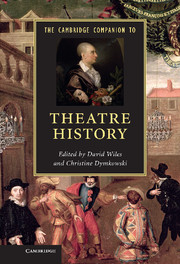Book contents
- Frontmatter
- Contents
- Illustrations
- Notes on Contributors
- Acknowledgements
- Part I Why?
- Part II When?
- Part III Where?
- Part IV What?
- Part V How?
- 15 The nature of historical evidence: a case study
- 16 The visual record: the case of Hamlet
- 17 Museums, archives and collecting
- 18 Re: Enactment
- 19 The internet: history 2.0?
- Index
- References
17 - Museums, archives and collecting
from Part V - How?
Published online by Cambridge University Press: 05 February 2013
- Frontmatter
- Contents
- Illustrations
- Notes on Contributors
- Acknowledgements
- Part I Why?
- Part II When?
- Part III Where?
- Part IV What?
- Part V How?
- 15 The nature of historical evidence: a case study
- 16 The visual record: the case of Hamlet
- 17 Museums, archives and collecting
- 18 Re: Enactment
- 19 The internet: history 2.0?
- Index
- References
Summary
Dionysius, the Syracusan tyrant, was an aspirant playwright and was also said to have been the proud owner of the writing tablets, desks and lyres that in the previous century had belonged to the tragedians, Aeschylus and Euripides. Some two and a half millennia later, devotees of Noel Coward are being invited to bid for a lock of Coward’s hair, attached to an interview script dating from 1968. While many such objects have been cherished by fans over centuries, others have only survived on account of their neglect in public institutions: a random list might include a pair of Lydia Lopokova’s ballet shoes, David Garrick’s gloves, and, more bizarrely, the amputated leg of Sarah Bernhardt, which was recently rediscovered in the anatomical collection at the University of Bordeaux.
Collecting of all kinds has a long and fascinating history, and the desire to possess the relics of star performers, in particular, has resulted in a lucrative trade for dealers in recent years. Many observers have pointed to the erotic impulses behind collecting – Benjamin speaks of ‘the final thrill, the thrill of acquisition’ – and it is the ‘thrill’ of the chase, especially, that fuels the ardour of the collector. As Phillip Blom has noted, ‘The most important object of a collection is the next one.’ And when the object itself is sexually titillating – as is the case with much ancient sculpture – there has often been a self-conscious awareness on the male collector’s part of the interrelations between the sexual pursuit of a beautiful woman and the allure and ‘penetration’ of antiquity.
- Type
- Chapter
- Information
- The Cambridge Companion to Theatre History , pp. 267 - 280Publisher: Cambridge University PressPrint publication year: 2012
References
- 3
- Cited by

